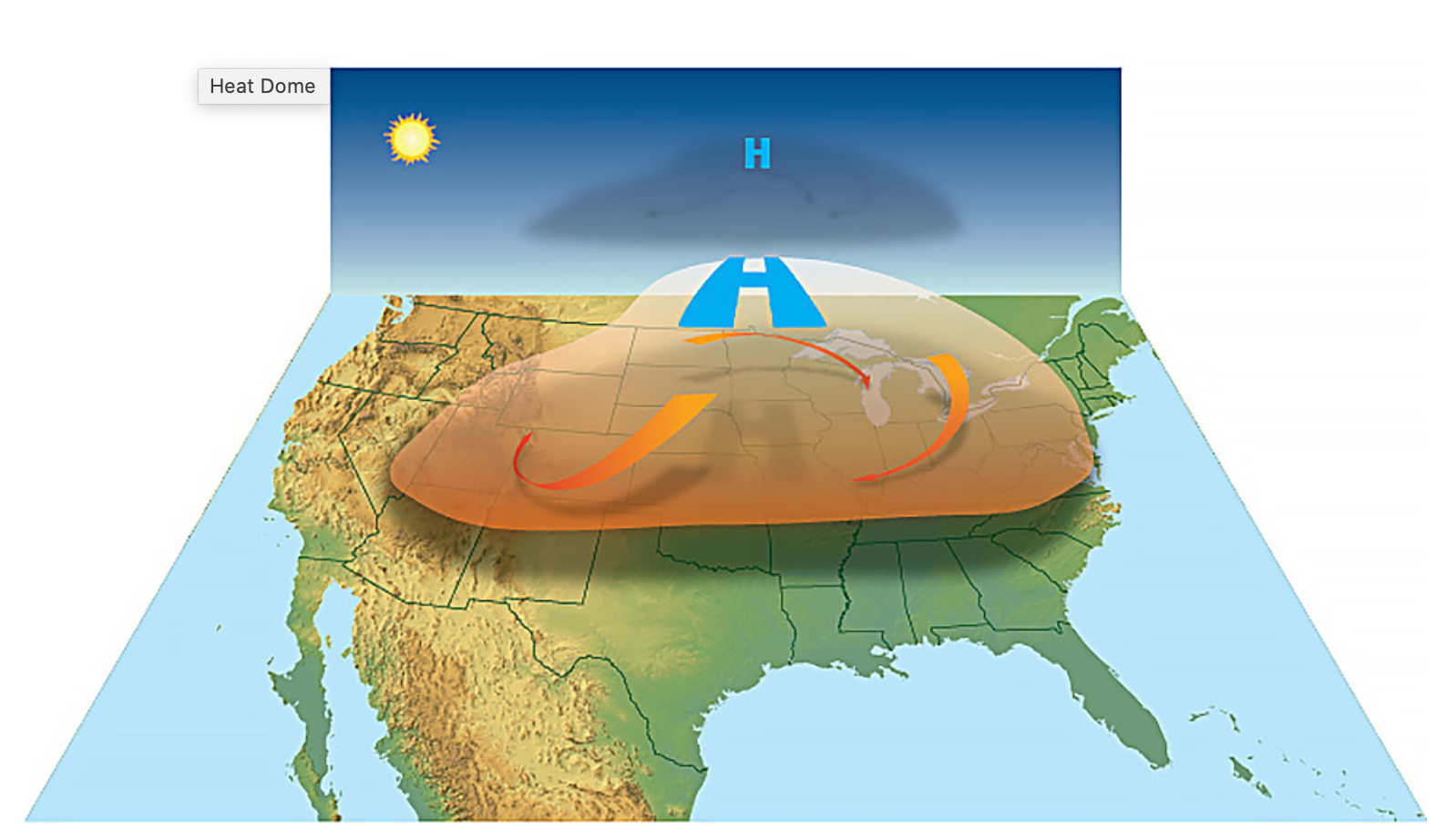What is a ‘heat dome’? The extreme events explained
Intense concentrations of hot air trapped over North America killed hundreds of people in the Pacific Northwest last year
Your support helps us to tell the story
From reproductive rights to climate change to Big Tech, The Independent is on the ground when the story is developing. Whether it's investigating the financials of Elon Musk's pro-Trump PAC or producing our latest documentary, 'The A Word', which shines a light on the American women fighting for reproductive rights, we know how important it is to parse out the facts from the messaging.
At such a critical moment in US history, we need reporters on the ground. Your donation allows us to keep sending journalists to speak to both sides of the story.
The Independent is trusted by Americans across the entire political spectrum. And unlike many other quality news outlets, we choose not to lock Americans out of our reporting and analysis with paywalls. We believe quality journalism should be available to everyone, paid for by those who can afford it.
Your support makes all the difference.As the climate crisis rumbles on, intense heatwaves are becoming more and more prevalent in the northern hemisphere.
Temperatures in Britain are set to soar again in August following a record-breaking July, with the Met Office saying the mercury is forecast to hit 35C once more this week.
The southwestern states of the US have already endured sweltering conditions this summer, with cities lke Phoenix, Arizona, and Las Vegas, Nevada, seeing soaring temperatures and Texas’s power grid breaking usage records in June as 40m Americans fought to stay cool.
A meteorologist with the US National Weather Service told CNN that such extreme warmth as the world has already experienced this summer could be attributed to a phenomenon known as a “heat dome”.
As the name suggests, a heat dome occurs when high pressure traps concentrations of hot air over a given area and blocks other weather systems from moving in and offering relief, leading to concentrated, uncomfortable levels of heat.
Heat dome conditions are what led to last year’s brutal heatwave in the Pacific Northwest, which killed hundreds of people in the US and Canada, breaking local temperature records across the region and starting a series of wildfires.
The climate emergency, driven largely by decades of burning fossil fuels, contributed to the red-hot heat and made it more intense, scientists say.
The 2021 Pacific Northwest heatwave would have been “virtually impossible” without the climate crisis, concluded World Weather Attribution, a group of climate scientists who measure the impact of human-caused warming on weather events.
At the time, politicians in affected areas reflected on the climate crisis.
Canadian prime minister Justin Trudeau warned that such events could become the norm unless more is done to avert rising global temperatures.

“We’ve been seeing more and more of this type of extreme weather event in the past years. So realistically, we know that this heatwave won’t be the last,” he said.
That sentiment was echoed by Washington governor Jay Inslee.
“This is the beginning of a permanent emergency,” he told MSNBC. “We have to tackle the source of this problem, which is climate change.”
The climate crisis is likely to make extreme heat events more frequent and more intense, reports the US Environmental Protection Agency.
Residents are encouraged to stay inside and stay hydrated as much as possible when such high temperatures are in play, rather than venture out into the scalding sun and endanger their health.




Join our commenting forum
Join thought-provoking conversations, follow other Independent readers and see their replies
Comments